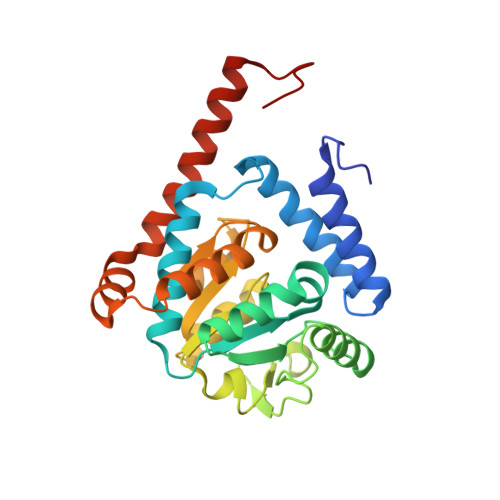Crystal structure of phosphopantothenate synthetase from Thermococcus kodakarensis
Kishimoto, A., Kita, A., Ishibashi, T., Tomita, H., Yokooji, Y., Imanaka, T., Atomi, H., Miki, K.(2014) Proteins 82: 1924-1936
- PubMed: 24638914
- DOI: https://doi.org/10.1002/prot.24546
- Primary Citation of Related Structures:
3WDK, 3WDL, 3WDM - PubMed Abstract:
Bacteria/eukaryotes share a common pathway for coenzyme A biosynthesis which involves two enzymes to convert pantoate to 4'-phosphopantothenate. These two enzymes are absent in almost all archaea. Recently, it was reported that two novel enzymes, pantoate kinase, and phosphopantothenate synthetase (PPS), are responsible for this conversion in archaea. Here, we report the crystal structure of PPS from the hyperthermophilic archaeon, Thermococcus kodakarensis and its complexes with substrates, ATP, and ATP and 4-phosphopantoate. PPS forms an asymmetric homodimer, in which two monomers composing a dimer, deviated from the exact twofold symmetry, displaying 4°-13° distortion. The structural features are consistent with the mutagenesis data and the results of biochemical experiments previously reported. Based on these structures, we discuss the catalytic mechanism by which PPS produces phosphopantoyl adenylate, which is thought to be a reaction intermediate.
Organizational Affiliation:
Department of Chemistry, Graduate School of Science, Kyoto University, Sakyo-ku, Kyoto, 606-8502, Japan.
















